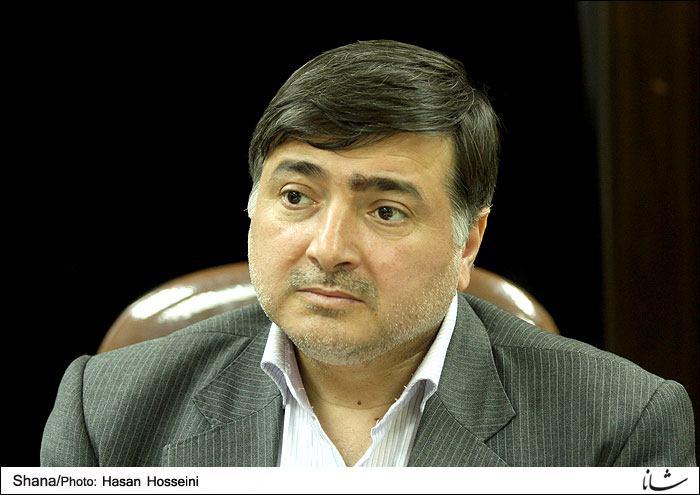What are plans of NISOC’s Technical Directorate to enhance oil production in the regions administered by the company?
NISOC is expected to add 68 tb/d to its oil output by March 2023. In other words, it will see its output increase to 3.001 mb/d from the 2.933 mb/d recorded in March 2022. To that end, various surface and subsurface projects including launching development and workover wells should be implemented.
Will NISOC see its production capacity exceed 3 mb/d by March 2023?
Yes, it is planned to go beyond 3 mb/d, but it is subject to conditions and obligations, as is the case with every other similar project. All Directorates aim to meet obligations for enhanced production. NISOC is tasked with oil production. Furthermore, it supplies 16% of national gas and provides 1.5 million barrels of feedstock to refineries.
How many wells are to be developed or worked over?
Over the coming five years, 315 wells are to be drilled and 534 wells to be worked over in NISOC-run areas.
How do you see the quality of NISOC oil?
The quality is acceptable in terms of both H2S and salinity. However, due to some problems in our facilities in some periods of time, and/or resuming production from some reservoirs; the quality of oil is likely to decline. Throughout the year, we are obligated to deliver oil of desirable quality in terms of salinity and H2S to refineries and export terminals. NISOC has always done its utmost to supply oil for export or feeding refineries at good quality and it has so far been successful in this regard.
It is said that heavy oil production has increased at NISOC reservoirs. Why?
NISOC produces oil of a variety of grades. Some of our reservoirs contain light crude oil, but Bangestan reservoirs produce heavy crude oil. We produce both light and heavy grades. Light crude is mainly sent to refineries, while heavy crude is destined for exports. The reservoir’s pressure falls off as soon as it starts production, releasing part of the gas solved in the oil. However, it would be not so as to significantly affect the quality of oil. Reservoir fluids are a natural characteristic of the reservoir.
National Iranian Oil Company (NIOC) has recently focused on the rehabilitation of low-yielding wells. How many of these wells are run by NISOC?
Some wells may experience problems when reservoirs start production. One of major tasks assigned to NISOC’s Technical Directorate is to resolve these problems and restore production, just like workover on many wells. But in the rehabilitation of some wells, some sort of technology may be required, which is not available to us or which may require certain operations. The planned rehabilitation of low-yielding wells is aimed at bringing such wells back to production. In this regard, NISOC in the first step assigned 33 wells to knowledge-based companies to be reviewed and offer solutions. In case these companies fare well, in the second and third steps, more wells would be introduced for the purpose of enhanced production or rehabilitation.
Do knowledge-based companies present their plans to NISOC?
The Science Park is in charge of this. The data about low-yielding wells is provided to knowledge-based companies through the Science Park. In the first step, every knowledge-based company may offer proposal for five wells. We have already received proposals from knowledge-based companies, which we are being reviewed now.
How much can rehabilitation of 33 wells add to NISOC’s output?
It depends on a variety of factors and varies from well to well. But if we consider an average 500 b/d output hike for each well, 33 wells will see about 15 tb/d output hike.
Is water injected into reservoirs?
Not for enhanced recovery, but more than 200 tb/d is injected for the protection of the environment. We recently injected water into the Ahvaz Bangestan reservoir for enhanced recovery on a pilot basis, which would be done within two years. EOR projects are costly and the oil obtained in this way costs high. Therefore, their success should be guaranteed. Everywhere in the world, a large-scale project is not introduced overnight for a reservoir. First, a pilot is chosen and then in case of success the entire project will be engaged. At NISOC, the pilot project is in Ahvaz Bangestan, where we started by injecting 10 tb/d of water in an area of 2 km long and 2 km wide. If we receive a positive feedback, we will extend it to the entire reservoir and then to all Bangestan reservoirs.
How much is NISOC planning to enhance its output over the coming five years?
With plans worked out so far, we hope to reach 3.28 mb/d output by March 2027.
To what extent have you reached your previous objectives?
We met more than 98% of our commitments and we have always made plans based on our production potential. We never offer any exaggerated figures which we would miss. Over the 43 years following the Islamic Revolution, our plans have always been practical and we have met our targets at 98%.
How much will be added to NISOC’s desalination capacity?
NISOC’s desalters have a total capacity of 2.5 mb, which is increasing. According to projects we have defined so far, we will bring the desalination capacity to 3.5 mb. We intend to establish skid-mounted desalters with a capacity of 2 kb, which we would use until fixed desalination installations are set up.
Scientific centers are said to be manufacturing downhole pumps. How will NISOC use them?
Yes, we have a plan under way with a knowledge-based company affiliated with Chamran University for the domestic manufacturing of 10 sucker rod pumps (SRP). Furthermore, three other local companies are ready to manufacture electrical submersible pumps (ESP). We plan to install 190 SRP and ESP pumps within five years at our reservoirs wherever needed.
By Mahnaz Mohammad-Qoli
Iran Petroleum


Your Comment